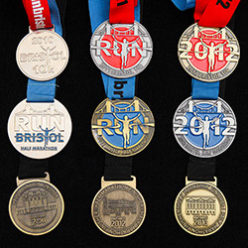Today, for the first time, I didn’t use Get Running. I’ve only got a few runs left in the C25K programme, so I figured I’d play with RunKeeper, one of my options for continued geekiness after I check all of the little boxes on Get Running’s “progress path”.
RunKeeper is one of the best iPhone running apps. I don’t see it as a competitor to Get Running; they’re different applications, for different users.
Get Running does one thing — gets a beginner running from scratch. And it does it extremely well.
RunKeeper is more general-purpose, and programmable, uses the GPS, links in with a web site, and does all manner of other clever things.
RunKeeper has a higher learning curve. There’s just a lot more to it, so it’s necessarily more difficult to get started with. Get Running effectively does one thing, and has one button, marked “Run!”, in large friendly letters.
RunKeeper needs you to turn off your WiFi (otherwise it might use the less accurate positioning information instead of the GPS), program your exercise yourself, if you’re following a plan, and starting off seems to involve pushing a few more buttons. Plus you’ve got to remember to stop it at the end.
(Also, RunKeeper’s synthesised voice prompts have nothing on the lovely, human, encouraging voice of Clare, who recorded the voice prompts for Get Running!)
But, when you get to the stage where the runs are just a half-hour of running, and you want to know a bit more about your pace, your progress, and how far you’re running, RunKeeper can make a very confident entrance into your training plan.
So, before I set off today, I programmed RunKeeper with the Week 8, Run 3 run of the C25K — carefully putting in two consecutive 14-minute runs, rather than one long 28-minute run, so I’d know when the halfway point was — and set off.
Today I’d decided to push my pace up a bit, to see just how far I could get in my 28 minutes. One RunKeeper feature I particularly like is a mode where if you tap the screen, it’ll tell you how you’re doing — your time, distance, and current pace.
This means there’s no need to crane your neck to figure out where you are in your run, or whether your pace has dropped off. I just slapped my conveniently-armbanded iPhone and the voice intoned my stats.
Anyway. Here’s the killer feature of RunKeeper, and why it’s called RunKeeper — the website integration. I’d created an account on runkeeper.com. I finished my run, hit RunKeeper’s “stop” button, told it I wanted to record my run, and by the time I was back indoors, it had been automatically uploaded to the website, and I could see it mapped out. And, even more hoopy, I can share it, like this:
Got to say, that’s pretty cool. And look — I’m doing pretty damn well! That’s 4.18km in 28 minutes, at an average pace of 6:45 per kilometer. That’s fast, for me, by the way 🙂
I’m going to use Get Running for the final week of the C25K, rather than RunKeeper — Get Running is easier to use, prettier, and the voice prompts are much nicer (and playback is slicker — Get Running fades the music down, speaks, then fades the music back up. RunKeeper just merges in with the music, making it difficult to hear.)
After that, I’m going to have to explore my options for getting up to 10K. RunKeeper will definitely be on the shortlist.
